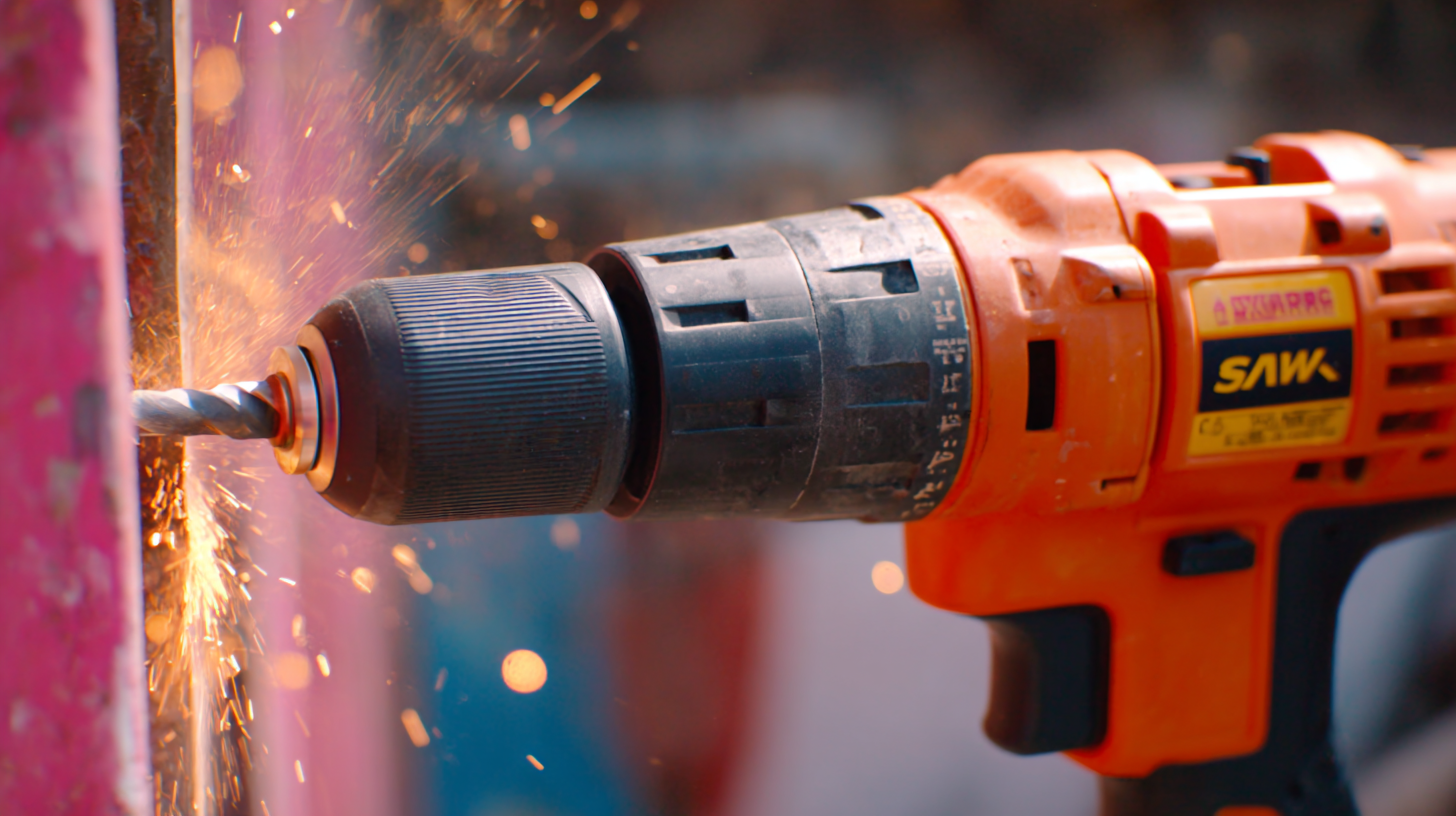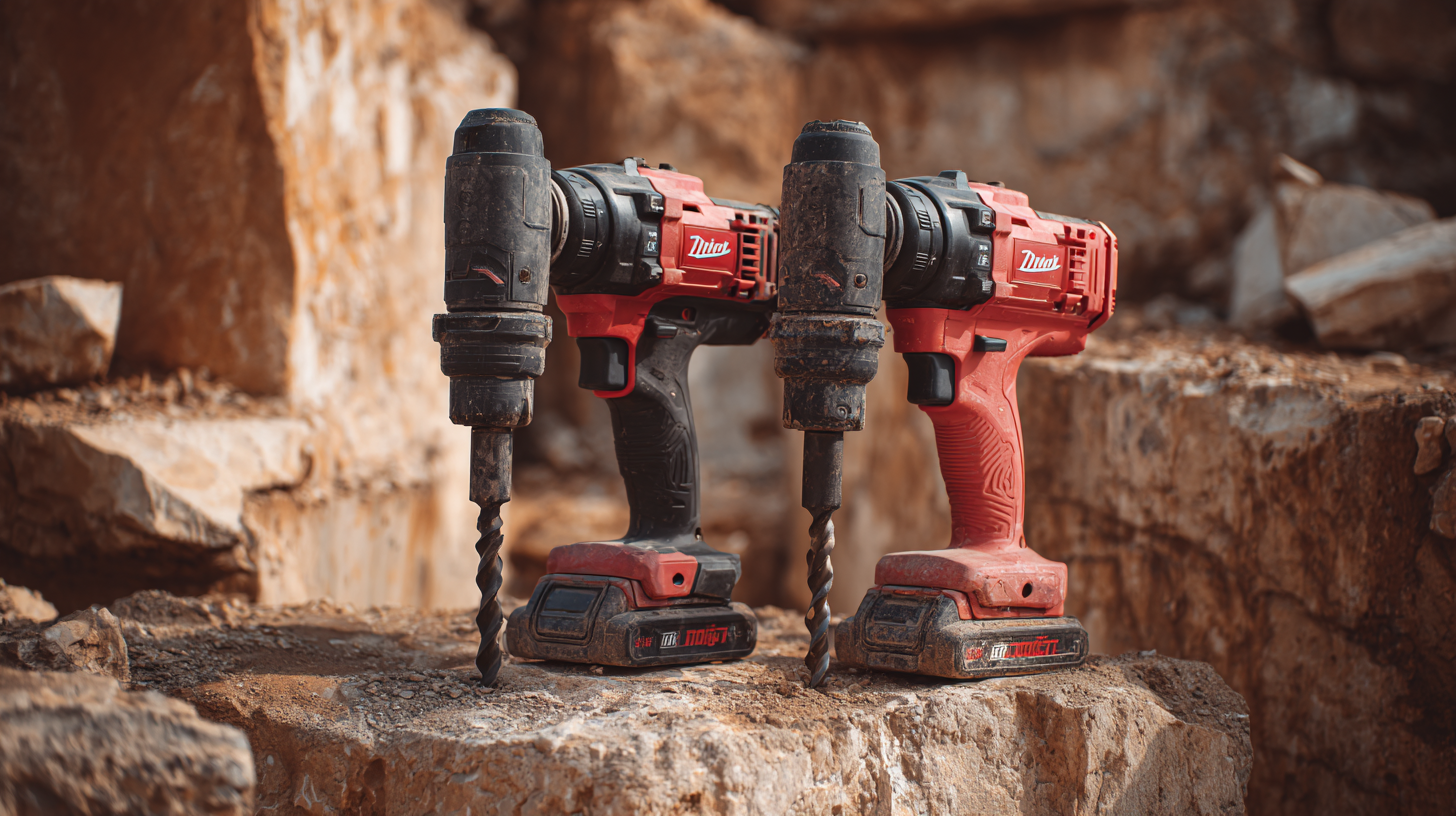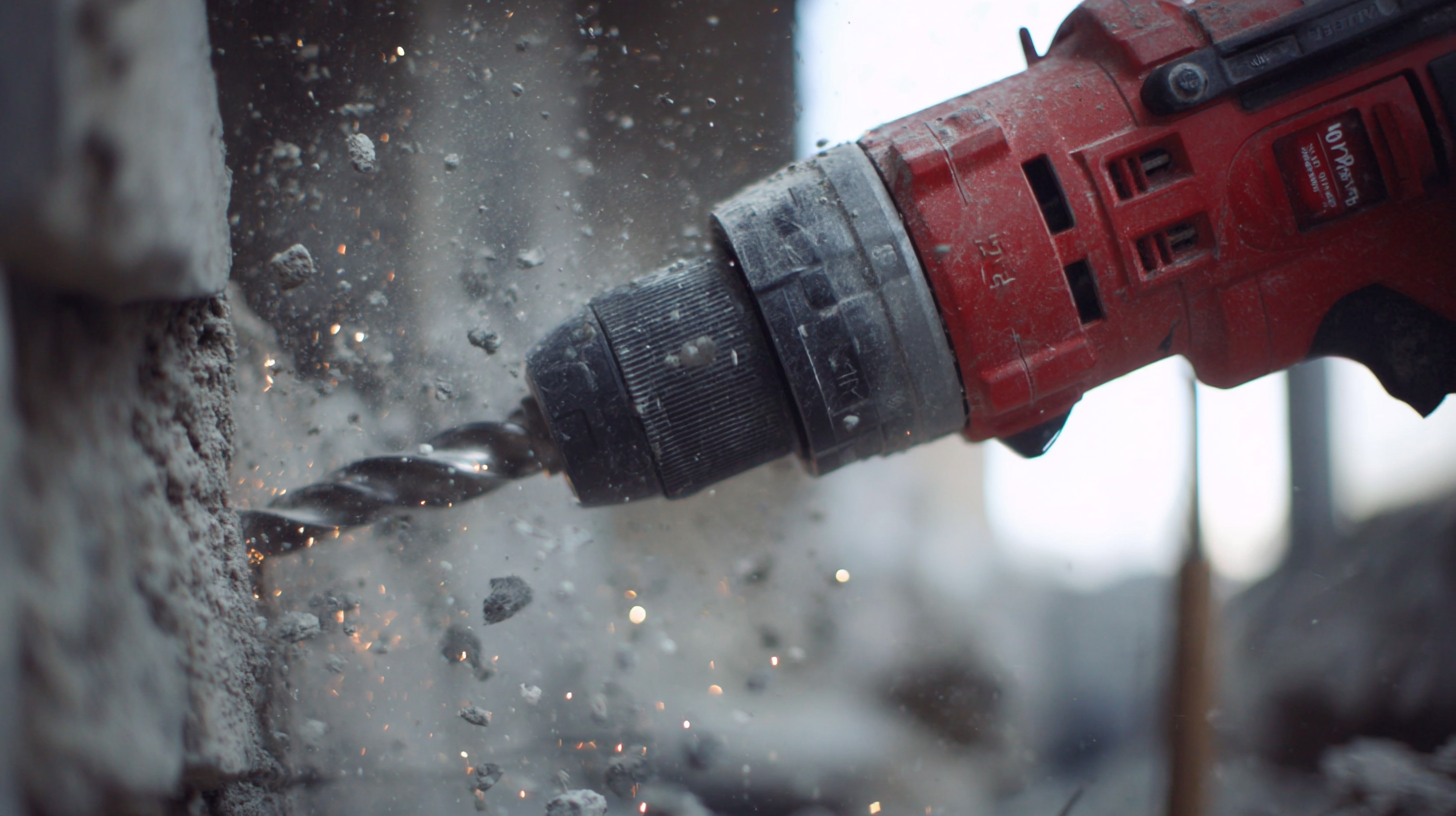In the ever-evolving construction industry, the efficiency and precision of tools play a pivotal role in determining project success. One tool that has gained prominence for its exceptional performance is the Air Rotary Hammer Drill. According to a recent report by IBISWorld, the global power tool market is projected to reach $44 billion by 2025, with pneumatic tools, including air rotary hammer drills, expected to capture a significant portion of this growth due to their superior power-to-weight ratios and versatility. The ability of these tools to effortlessly drill through concrete and masonry has made them indispensable for construction professionals, enhancing productivity and minimizing downtime. In this blog, we’ll explore the top five examples of the best Air Rotary Hammer Drills available, highlighting their features and benefits to help you make informed choices for your construction projects.

When selecting an air rotary hammer drill for construction excellence, several key features can significantly enhance performance. First and foremost, power and speed are crucial. A drill with a higher BPM (blows per minute) will ensure efficient drilling through tougher materials, making it particularly useful for heavy-duty applications. Look for models that offer adjustable speed settings to tailor the drilling approach based on the specific task at hand, which can greatly improve precision and control.

Additionally, ergonomics and weight play a significant role in the overall usability of an air rotary hammer drill. Opting for a model that’s lightweight yet robust can reduce operator fatigue during prolonged use. Comfortable grips and a well-balanced design can enhance maneuverability, allowing users to work effectively in tight spaces. Lastly, features such as a quick-change chuck mechanism and dust protection are vital for maintaining downtime and ensuring longevity, making these drills not only efficient but also reliable tools on construction sites.
When it comes to construction tasks that require precision and power, the performance of an air rotary hammer drill can significantly impact efficiency. Key metrics such as hammering force, RPM, and ergonomics play crucial roles in determining the effectiveness of these tools. For instance, the hammering force, measured in joules, indicates how much impact the drill can deliver to break through tough materials. A higher force usually translates to quicker drilling speeds and less user fatigue, making it vital for heavy-duty applications.
Another critical aspect is the RPM (revolutions per minute), which affects the speed and efficiency of drilling. A higher RPM allows for faster drilling in softer materials, while a lower RPM is preferable for harder surfaces. Additionally, the design and weight of the drill contribute to its overall usability. Ergonomically designed tools minimize strain during extended use, ensuring that operators can work more comfortably and maintain productivity throughout the job. By focusing on these key performance metrics, construction professionals can select the best air rotary hammer drills tailored to their specific needs, thereby enhancing their overall performance on site.
| Model | Impact Energy (Joules) | Blows Per Minute (BPM) | Weight (lbs) | Vibration Level (m/s²) | Price ($) |
|---|---|---|---|---|---|
| Model A | 5.0 | 4500 | 12.5 | 6.5 | 299 |
| Model B | 6.5 | 4800 | 10.8 | 5.5 | 399 |
| Model C | 4.8 | 4200 | 13.1 | 7.0 | 249 |
| Model D | 6.0 | 4600 | 11.9 | 6.1 | 349 |
| Model E | 5.5 | 5000 | 12.0 | 6.8 | 379 |
In the realm of construction, air rotary hammer drills have undergone significant technological advancements, leading to enhanced user efficiency and performance. One of the most innovative technologies featured in these tools is the incorporation of vibration dampening systems. These systems reduce the amount of vibration transferred to the user, minimizing fatigue during extended use. This not only enhances comfort but also improves precision, allowing for cleaner and more accurate drilling operations.
Another noteworthy advancement is the implementation of intelligent control features in modern air rotary hammer drills. These controls can automatically adjust power levels based on the material being drilled, providing optimal performance without compromising safety. Additionally, many units now include digital displays that offer real-time data on speed and torque, empowering users to make informed decisions on-the-fly. This integration of smart technology transforms traditional drilling tasks into efficient and streamlined processes, ensuring that construction professionals can focus on getting the job done effectively.
When it comes to construction work, choosing the right tools can significantly impact effectiveness and efficiency. Air rotary hammer drills have garnered attention for their superior performance, particularly in heavy-duty applications. User testimonials highlight the reliability and power these tools bring to a job site, with many professionals praising their ability to break through concrete and masonry with minimal effort. One contractor noted, "Using an air rotary hammer drill saved us hours of labor and reduced the strain on our team."
Tips for selecting the best air rotary hammer drill include considering the tool's weight and vibration control features. A lightweight model can enhance maneuverability, while advanced vibration dampening ensures comfort during prolonged use. Users frequently recommend checking the air pressure requirements since optimal performance relies on a consistent supply of compressed air.
Another insightful tip involves choosing a drill with variable speed settings. This flexibility allows users to adapt the tool's performance for diverse materials and conditions. Many professionals have reported that this feature not only improves precision but also extends the tool's lifespan by preventing overheating, demonstrating the importance of thoughtful selection in achieving enhanced performance at work.
When it comes to enhancing performance in construction, investing in the right air rotary hammer drill can make all the difference. According to industry reports, air rotary hammer drills significantly reduce drilling time compared to traditional models, with efficiency improvements of up to 50%. This not only accelerates project timelines but also optimizes productivity on job sites, especially when dealing with hard materials like concrete or masonry.
Choosing the right air rotary hammer drill involves weighing factors such as power, weight, and features. A recent analysis highlights that lightweight models are gaining popularity among professionals, as they provide ease of use without sacrificing performance. Additionally, advanced models with variable speed settings and vibration reduction technology not only enhance comfort but also allow for precision work, making them ideal for both heavy-duty tasks and intricate detailing. With the right tool, construction professionals can achieve remarkable results while ensuring safety and reducing fatigue during long hours of operation.

